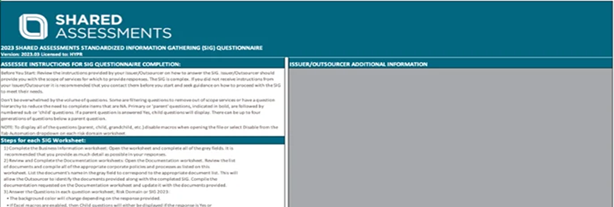Banner artwork by U-STUDIOGRAPHY DD59 / Shutterstock.com
It was 5:30 pm on a Friday when sales emails and Slack messages lit up. A high-stakes deal, months in the making, was on the verge of falling apart. The customer’s privacy and security diligence team would not sign off until a crucial compliance questionnaire was completed. The deal was stuck. Procurement deadlines loomed. The sales team scrambled. Legal and compliance teams braced for late-night negotiations.
But there was no shortcut. The customer’s team was backlogged and unwilling to rush. The deal stalled, frustration mounted, and blame shifted to the negotiation team.
How did we get here? A broken diligence process.
The six touches
At many organizations, the customer diligence process is slow and frustrating because it isn’t designed for efficiency. It often takes six distinct “touches” to simply exchange compliance materials — far more effort than most assume.
Here’s how it typically unfolds:
- Customer security and privacy team initiates diligence, requiring security, privacy, compliance, and technical documentation.
- Customer procurement team relays requirements and technical security questionnaires to the business unit and seller.

Figure 1. Standardized security questionnaire
- Seller’s account manager receives the request and passes it along internally.
- Seller’s compliance team begins compiling documentation, often via a ticketing process.
- Legal team negotiates an NDA to protect the materials.
- Cross-functional teams (security, audit, compliance) scramble to address non-standard questions, pulling them away from their core responsibilities.

Figure 2. Six Points of Contact (Bidirectional Flow)
Each touchpoint risks delay, especially when teams juggle full workloads. At scale, the burden is amplified by:
- High volumes of security questionnaires;
- Decentralized or inconsistent compliance documentation;
- Integration issues following mergers and acquisitions; and
- Evolving regulations like GDPR, AI governance, and new resilience frameworks.
Highly skilled professionals spend hours exchanging PDFs and spreadsheets, instead of driving strategic value.
The trust portal solution
Trust portals streamline this entire process. A trust portal is a centralized, self-service hub where customers, vendors, and auditors access security, privacy, and compliance documentation.

Figure 3. Everbridge Trust Center (https://trust.everbridge.com)
With a trust portal, the process shrinks from six steps to two — without sacrificing thoroughness:
- The customer accesses the trust portal.
- They download exactly what they need.

Figure 4. Two Points of Contact (Self-service)
This shift reduces friction, accelerates contracting, and gives customers immediate confidence in your organization’s readiness. A modern trust portal provides:
- Pre-populated standardized questionnaires (SIG Lite, CAIQ, etc.);
- Downloadable documentation for common customer diligence needs;
- A single source of truth for compliance materials;
- Version control and standardized updates, reducing risk and rework; and
- Engagement metrics that offer insight into customer behavior.
Beyond compliance: Trust as a strategic asset
While trust portals were designed to streamline compliance, they deliver other unexpected and lasting benefits.
1. Customer trust becomes a competitive advantage
Transparency earns trust. Trust accelerates sales, improves customer satisfaction, and builds long-term loyalty. A trust portal signals commitment to accountability by giving customers easy, direct access to up-to-date information.
A trust portal signals commitment to accountability by giving customers easy, direct access to up-to-date information.
2. Support for broader commitments
A trust portal can also centralize:
- AI governance disclosures;
- ESG reports;and
- Other ethical and regulatory commitments.
3. Streamlined onboarding and renewals
Customers and internal teams alike benefit from clear, consistent, self-serve access to current materials during onboarding and renewals — reducing errors, delays, and repetitive questions.
4. Security ratings integration
Portals can integrate security ratings (e.g., SecurityScorecard, BitSight, UpGuard) to objectively demonstrate the organization’s security posture.
Operationalizing a trust portal
When are you ready?
Trust portals aren’t just for the largest tech companies anymore. To be effective, you’ll need:
- Mature documentation across security, privacy, compliance, and resilience programs; and
- Clear ownership from a leader capable of navigating internal teams and maintaining the portal.
If your programs are still maturing, the promise of efficiency can actually drive better internal alignment.
Build vs. buy
We explored both options when implementing our own trust portal. Initially, we built a basic portal on our customer service platform. It worked — but had limitations:
- Manual onboarding;
- No NDA workflows;
- No usage metrics; and
- No integrated version control.
Ultimately, we realized the trust portal isn’t just a compliance tool — it’s one of the first impressions we make on customers. Given its direct impact on trust and deal velocity, we needed something purpose-built for their needs.
We evaluated several vendors, including SafeBase, Whistic, Vanta, and SecurityPal, and selected a commercial solution that delivered:
- NDA gating, watermarking, and download logging;
- Metrics on customer engagement; and
- Seamless customer access with minimal manual work.
For organizations considering the same choice, the key question is not just about cost or control, but about elevating the customer experience during the most sensitive part of the relationship — procurement and diligence.
Implementing the portal
We recommend a phased approach:
- Prioritize content most critical to the sales cycle.
- Develop governance for content maintenance.
- Train internal teams through enablement programs.
- Use external communications (customer updates, social media) to promote the portal.
Cultural change is just as important as technical implementation. We built a sales enablement course to equip our teams with:
- The value proposition of the portal;
- Customer-facing email templates;: and
- Talking points.
The future of trust portals
What’s next? AI-powered portals. Instead of static repositories, future portals will:
- Auto-complete customer questionnaires;
- Integrate with audit workflows;
- Surface live metrics on security, compliance, and resilience; and
- Enable real-time Q&A via AI chatbots.
Organizations investing in trust portals today are preparing for this smarter, faster future.
Trust portals turn bureaucratic friction into strategic advantage. Deals close faster, customers self-serve with confidence, and highly skilled teams focus on creating value — not routing PDFs.
Perhaps most importantly, with a trust portal, there will be fewer Friday night surprises.
Disclaimer: The information in any resource in this website should not be construed as legal advice or as a legal opinion on specific facts, and should not be considered representing the views of its authors, its sponsors, and/or ACC. These resources are not intended as a definitive statement on the subject addressed. Rather, they are intended to serve as a tool providing practical guidance and references for the busy in-house practitioner and other readers.






